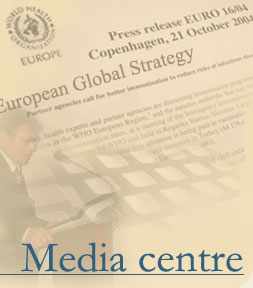Stunting: main nutrition-related problem in WHO European Region
New WHO/UNICEF guidelines issued
Copenhagen
Growth retardation, indicated by a low height-for-age index (stunting) is the main nutrition-related problem in the WHO European Region, according to a new WHO publication, prepared by the WHO Regional Office for Europe and the United Nations Children's Fund (UNICEF) and released today: Feeding and nutrition of infants and young children. Guidelines for the WHO European Region, with emphasis on the former Soviet countries.
Stunting is especially widespread in the central Asian republics, where it affects up to 43% of children under 5 years of age. Stunting is an expression of long-term exposure to nutritional inadequacy and indicates chronic malnutrition in children lacking essential nutrients. It is also associated with poor sanitary conditions, repeated infections, diarrhoea and inadequate care. Stunting is especially common in low-income groups.
The new publication presents guidelines to improve the nutritional status of young children and infants. It makes specific recommendations about micronutrient supplements, such as iodine and iron, breastfeeding and complementary feeding schedules, and the prevention of anaemia. The guidelines target paediatricians, policy-makers and national experts, providing them with scientific evidence so that they can develop or update their current national recommendations on nutrition and feeding.
"A large portion of the health care budget is used to treat preventable nutrition-related disorders, costs that could be substantially reduced if these disorders were prevented. Implementing these guidelines will enable countries to develop their own national nutrition policies for infants and young children. ... Children represent the future of a nation; and these guidelines have been produced with the intention that young children, especially the disadvantaged, will have a better future," say Marc Danzon, WHO Regional Director for Europe, and John Donohue, Regional Director, CEE/CIS and the Baltics, UNICEF Office for Europe, in the book's foreword.
For more information, contact:
|
|
|

